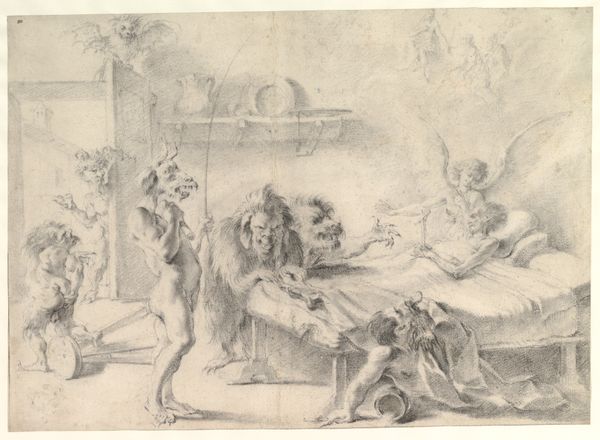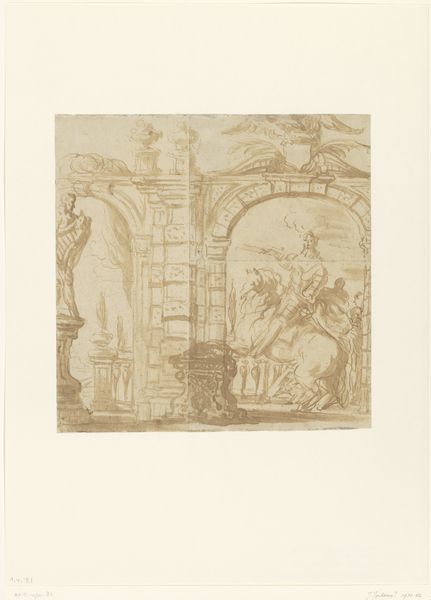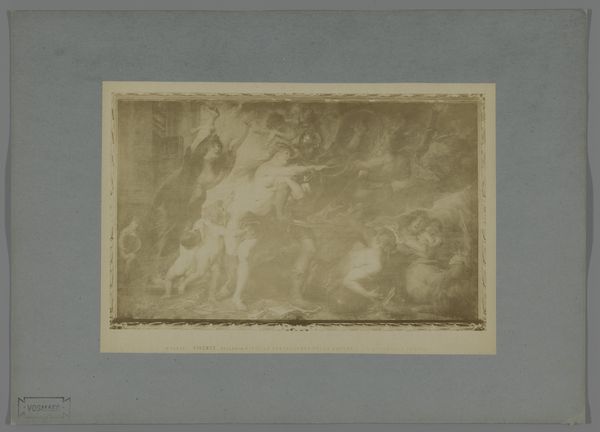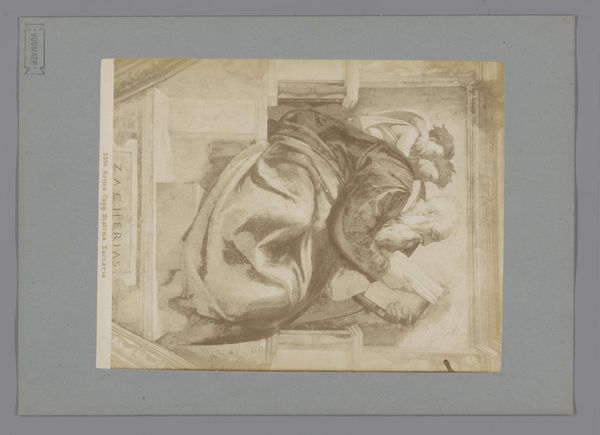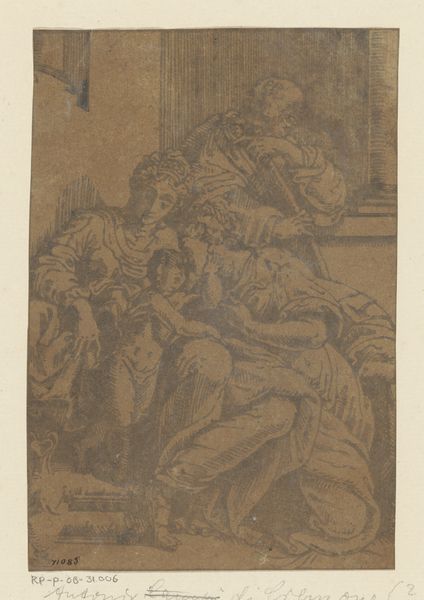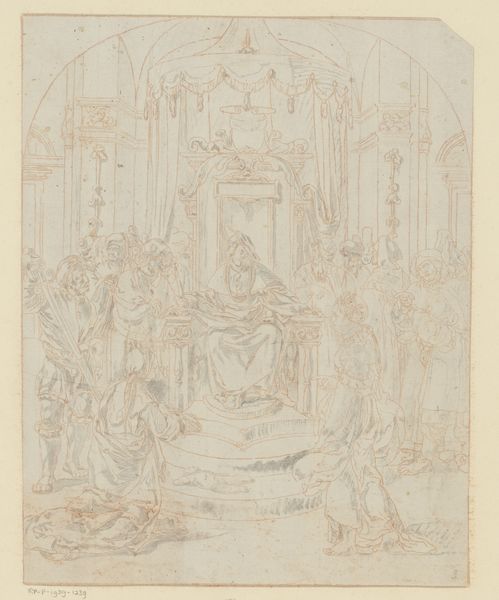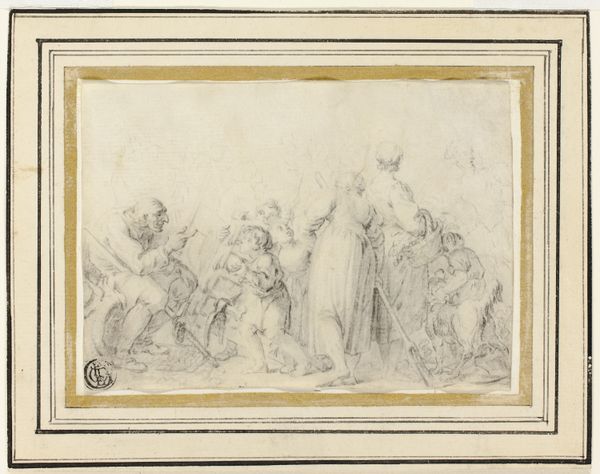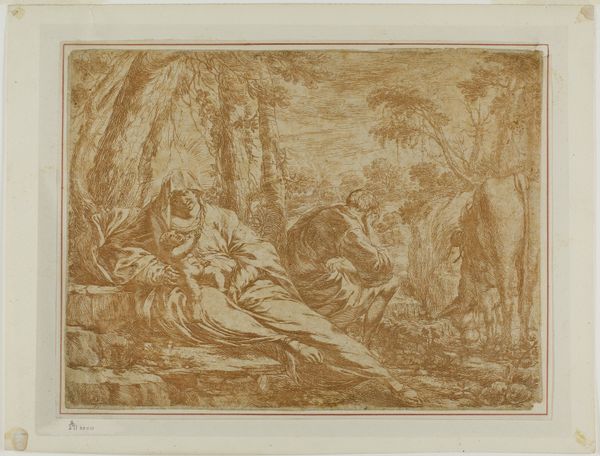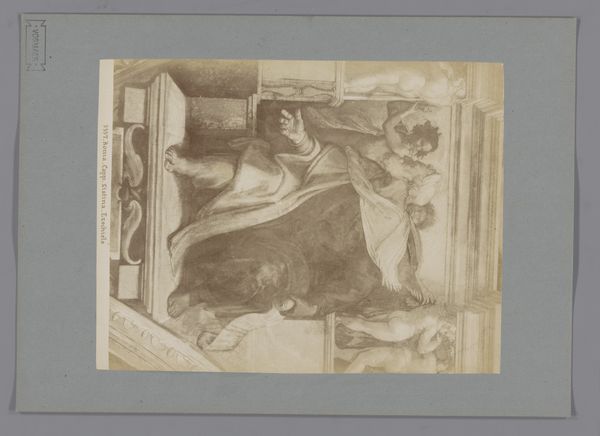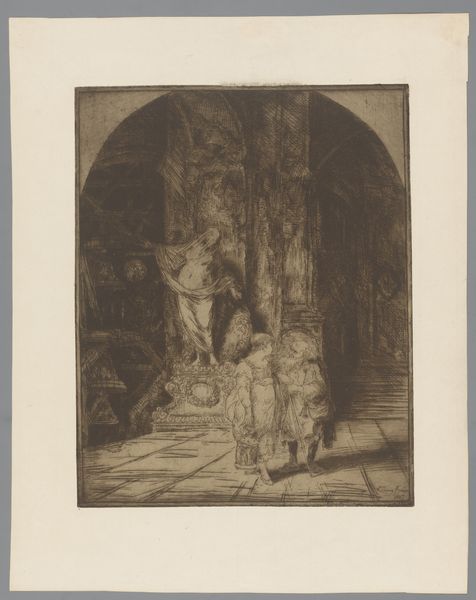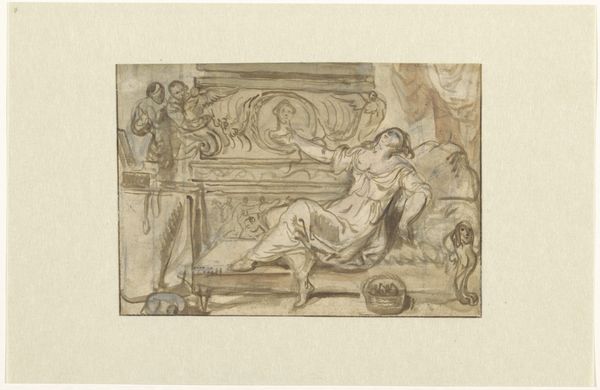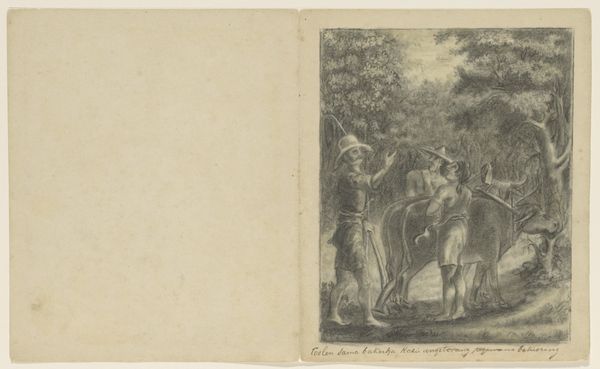
Dimensions: height 127 mm, width 177 mm
Copyright: Rijks Museum: Open Domain
Curator: Here we have an intriguing piece, "Zittende man en een jongen knielend voor een vrouw," dating from around 1600 to 1731. It is held here at the Rijksmuseum and created in ink with a pen and engraving on paper by an anonymous artist. Editor: My initial feeling is that this work evokes a sense of hushed reverence or perhaps even suppressed anxiety. The chiaroscuro, that dramatic contrast of light and shadow, really amplifies the scene's emotional weight. Curator: Indeed. The pronounced use of chiaroscuro is a key element, reflective of the mannerist style, a departure from the High Renaissance's balanced forms and clear light. Also it is quite aligned with the academic interest of the period. We can also see a common use of allegory and narrative, prevalent during this time as artists explored more complex social and political commentary through biblical or historical allegories. Editor: Precisely. The kneeling figures before the seated woman certainly suggest a power dynamic at play, which leads to important questions regarding hierarchies and the roles imposed upon those lower in social status at the time this work was made. There seems to be something happening about power and privilege right in this print, don't you think? Curator: Undoubtably. It’s an artistic statement, one that mirrors, perhaps unwittingly, the established social order, the role of the elite, and even, to some extent, a critique of institutions that fostered inequality. Editor: And let's not overlook the gendered aspect here. The woman's seated position denotes authority while the male figures are placed in positions of deference. One needs to address whether the artist is actively subverting those notions or simply reflecting these stereotypes of a woman empowered at that time? Curator: A pertinent point. The engraving’s style places it firmly within the tradition of portraying power relations, but there remains a fascinating ambiguity – a question mark hanging over the intended interpretation. Editor: This piece prompts reflection about historical dynamics of power, offering contemporary viewers much to contemplate regarding persistent inequality. It reveals a reflection of our history that is sometimes hard to recognize when looking at paintings, for example. Curator: Absolutely, it makes you wonder about its historical impact and ongoing relevance today. Editor: Definitely food for thought, which I appreciate.
Comments
No comments
Be the first to comment and join the conversation on the ultimate creative platform.


